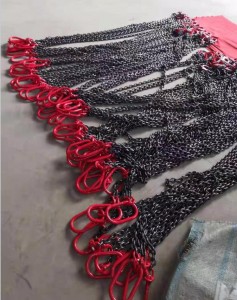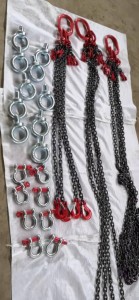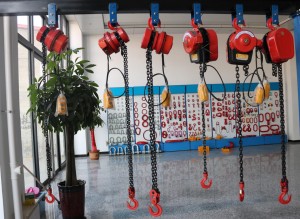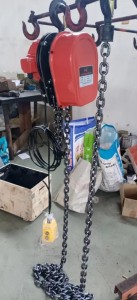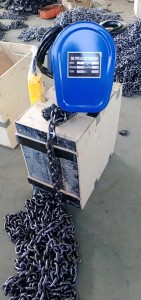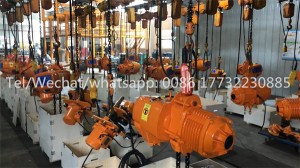When using lifting chain tools, it is essential to prioritize safety to prevent accidents and ensure the well-being of operators and those in the vicinity. Here are some common safety procedures to follow when using lifting chain tools:
Equipment Inspection: Before using any lifting chain tool, inspect it thoroughly for any signs of damage, wear, or defects. Check for cracks, deformation, or corrosion in the tool components. Ensure that all fasteners, such as bolts and pins, are secure and in good condition. If any issues are identified, do not use the tool and arrange for repairs or replacement.
Load Capacity Assessment: Determine the load capacity of the lifting chain tool and ensure that it is suitable for the intended load. Never exceed the recommended weight limit of the tool, as it can lead to equipment failure or accidents. Refer to the manufacturer’s specifications and guidelines for load capacity information.
Proper Use and Application: Use the lifting chain tool only for its intended purpose and in accordance with the manufacturer’s instructions. Ensure that the tool is correctly positioned and securely attached to the load. Follow proper rigging practices, including the correct attachment of hooks, connectors, or slings to the lifting chain.
Personal Protective Equipment (PPE): Wear appropriate personal protective equipment, such as safety gloves, safety glasses, and, if necessary, hard hats or steel-toed boots, to protect against potential hazards. The specific PPE requirements may vary depending on the nature of the task and the surrounding environment.
Training and Competence: Ensure that operators are adequately trained and competent in the safe use of lifting chain tools. Training should cover proper tool operation, load handling techniques, and safety procedures. Regularly update and refresh training to keep up with best practices and industry standards.
Clear Workspace and Communication: Maintain a clear and organized workspace, free from obstructions or tripping hazards. Establish clear communication protocols between operators and any other personnel involved in the lifting operation. Use standardized hand signals or communication devices to coordinate movements and ensure everyone’s safety.
Regular Maintenance and Inspection: Perform regular maintenance on lifting chain tools according to the manufacturer’s recommendations. This includes lubrication, cleaning, and periodic inspections for wear and damage. Replace any worn or damaged components promptly.
Safe Lifting Practices: Follow safe lifting practices, such as avoiding sudden or jerky movements during lifting or lowering operations. Use controlled and gradual movements to prevent the load from swinging or shifting. Be cautious of pinch points or entanglement hazards.
Emergency Preparedness: Have a clear understanding of emergency procedures and protocols in case of accidents or equipment failures. Know how to safely release a load in an emergency situation and have appropriate emergency response and first aid measures in place.
Remember, safety should always be the top priority when using lifting chain tools. By following these safety procedures, you can minimize risks and ensure the safe and efficient handling of loads.
Post time: Aug-26-2023






